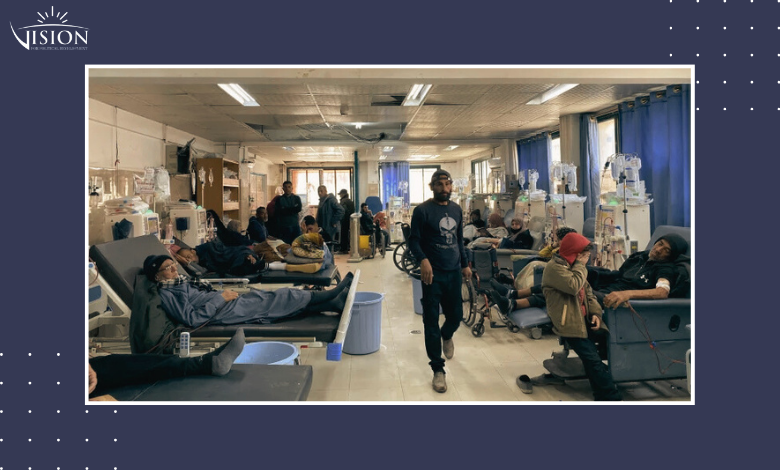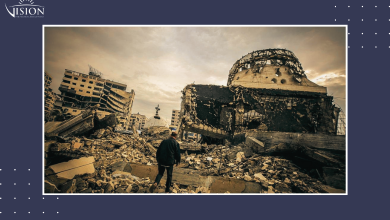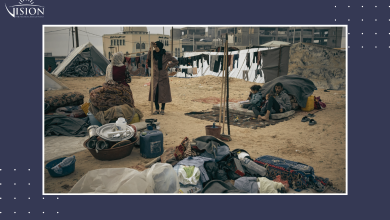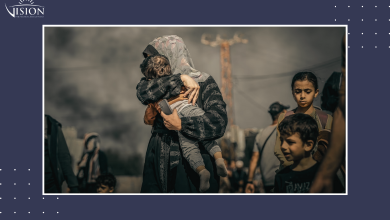Gaza’s Healthcare Siege: A Death Sentence for Chronic and Critical Patients Alike

Chronic disease patients in the Gaza Strip are enduring a catastrophic reality that has claimed the lives of hundreds, as Israel continues its genocidal war against 2.4 million Palestinians in Gaza for over a year and a half. This onslaught has decimated infrastructure and civilian facilities — including hospitals, health centers, and primary care units — in brazen violation of international and humanitarian law, which mandates the protection of medical personnel and facilities.
Despite the clear stipulations of international law — particularly the First and Fourth Geneva Conventions — which guarantee the protection and medical care of patients during times of conflict, Israel has blocked the entry of all medicines and medical supplies into Gaza for nearly 91 consecutive days by sealing all border crossings. This blockade includes life-saving treatments for those with chronic illnesses, further deepening their suffering amid a collapsing healthcare system and an acute shortage of food — the result of Israel’s deliberate starvation policy, which has reached catastrophic levels.
WHO: Chronic Diseases are a Silent Killer, Hitting the Most Vulnerable the Hardest
The World Health Organization defines chronic diseases — also known as noncommunicable diseases (NCDs) — as long-lasting conditions resulting from a combination of genetic, physiological, environmental, and behavioural factors. These include cardiovascular diseases, cancers, respiratory illnesses, and diabetes.
Alarmingly, these diseases disproportionately affect populations in low- and middle-income countries, where over three-quarters of global deaths from chronic illnesses occur. This staggering figure exposes a deep global health inequity — one that turns preventable or manageable conditions into death sentences for the world’s most vulnerable communities.
Hundreds of Thousands with Chronic Illnesses in Gaza Deprived of Care, Left to Face Death
As of April 7, 2024, nearly 350,000 patients in Gaza suffer from chronic diseases — including 120,000 with hypertension, 100,000 with diabetes, 11,000 with cancer, and 674 with kidney failure.
The vast majority have been completely denied access to essential medical care, including routine checkups and critical medications, due to Israel’s ongoing genocidal war on Gaza. This deliberate obstruction of healthcare has led to severe deterioration in their conditions, causing dangerous complications and pushing many to the brink of death.
According to a statistical report by the Palestinian Ministry of Health in Gaza, Israel’s genocidal war has led to the deaths of hundreds of chronic disease patients. The mortality breakdown highlights the deadly impact of the healthcare collapse; with 2.4% Hypertension-related deaths, 2.0% deaths due from Cardiovascular diseases, 1.4% deaths from Pneumonia, 1.0% deaths due to Diabetes, 0.8% deaths from Malignant tumors, and 0.6% deaths from Kidney failure[1].
These figures reflect not just medical conditions, but the deadly consequences of systemic medical deprivation under siege — where treatable diseases are now fatal due to deliberate obstruction of care.
Systematic Destruction of Gaza’s Health Infrastructure Leaves Chronic Patients Abandoned
The suffering of Gaza’s chronically ill has been exponentially worsened by Israel’s deliberate targeting of the healthcare system — through the destruction of hospitals and primary care centers, and the killing and arrest of medical personnel.
According to a May 2025 press release (No. 817) from the Government Media Office in Gaza, the Israeli war machine has:
- Shut down 38 hospitals, including the Turkish-Palestinian Friendship Hospital, Gaza’s only specialized center for cancer treatment.
- Destroyed 81 primary care centers run by the Palestinian Ministry of Health and UNRWA.
- Targeted 164 health facilities and 144 ambulances, rendering them inoperable.
- Killed 1,411 medical personnel and arrested 362, three of whom were executed in detention.
This calculated assault has left patients with hypertension and diabetes — who rely on routine medical monitoring — with no access to primary care, diagnostic tests, or lab work. The consequences are severe and irreversible: blindness, limb amputations, heart attacks, and strokes, all of which could have been prevented with basic care.
What is unfolding is not a collapse — it is a systematic dismantling of Gaza’s health system, carried out with intent and precision[2].
Tens of thousands of diabetic patients in Gaza are suffering from diabetic foot ulcers, infections, and severe pain, with no access to specialized care due to the total collapse of the healthcare system. The lack of treatment has led to dozens of amputations — with 120 amputation cases recorded at Al-Ahli Arab Hospital (Baptist Hospital) alone.
The Israeli military’s demolition of the Turkish-Palestinian Friendship Hospital obliterated advanced diagnostic equipment, including MRI and CT scanners, effectively cutting off 12,500 cancer patients in Gaza from treatment and life-saving care.
Meanwhile, the targeted destruction of hospitals — compounded by power outages and critical fuel shortages — has paralyzed cardiac care units. ECG machines, cardiac catheterization labs, and defibrillators have stopped functioning, placing thousands of heart patients, who rely on pacemakers and regular monitoring, in imminent danger.
This is not just a health crisis — it is a deliberate, systematic healthcare siege, pushing Gaza’s most vulnerable closer to death each day under the weight of an ongoing genocidal assault.
WHO: Final Lifeline for Gaza’s Heart and Cancer Patients Destroyed by Israeli Strike
On May 15, the World Health Organization (WHO) confirmed the shutdown of Gaza’s last functioning hospital providing care for heart and cancer patients, after a devastating Israeli attack on the European Hospital in Khan Younis. The strike caused severe damage, rendering the facility completely out of service.
As a result, 11,000 cancer patients across Gaza have been stripped of access to treatment and proper medical care. The collapse of services, compounded by the loss of early diagnostic equipment, has triggered a sharp deterioration in patients’ health, according to a May 2025 press release from the Palestinian Ministry of Health.
This marks a deadly milestone in the systematic annihilation of Gaza’s healthcare system — where life-saving care is no longer a right, but a memory.
Gaza’s Kidney Patients Left to Die as Dialysis Centers Are Destroyed
Patients suffering from kidney failure in Gaza are enduring unimaginable suffering following the Israeli military’s deliberate destruction and burning of dialysis centers and equipment. This assault has obliterated access to continuous care and essential treatment monitoring, while a severe shortage of dialysis machines — amid a sharp rise in patients — has pushed the remaining operational centers to cut back dialysis sessions from three to just two per week, and to halve treatment time from four hours to two.
This drastic reduction poses a grave threat to patients’ health and survival.
According to Dr. Ghazi Al-Yazji, head of the dialysis department at Al-Shifa Medical Complex, the number of kidney failure patients in northern and southern Gaza stood at around 1,100 before October 7, 2023. Today, only 700 remain — a staggering 42% have died, primarily due to the total shutdown of dialysis units under the blockade and systematic destruction[3].
Gaza’s kidney patients are not succumbing to disease — they are being killed by denial of treatment.
Gaza’s Siege Pushes 350,000 Patients Toward Slow, Preventable Death
Gaza’s humanitarian catastrophe is worsening by the day, with 350,000 chronic disease patients now facing a slow and deliberate death, according to a May 2025 press release (No. 817) from the Government Media Office. The Israeli siege continues to block the entry of essential medicines and medical supplies, accelerating the collapse of the already-crippled healthcare system.
According to Dr. Zakaria Abu Qamar, Director of the General Directorate of Pharmacy at Gaza’s Ministry of Health, 80,000 diabetic patients and 110,000 hypertension patients are without access to critical medications at primary care centers — with shortages reaching 48%. The situation is even more dire for cancer and blood disorder patients, with a 67% shortage, and 43% among kidney failure patients, threatening not only their health but the full suspension of treatment protocols.
The World Health Organization has warned that most medical equipment stocks in Gaza have been completely depleted, and 42% of essential medicines — including basic painkillers — are no longer available.
Diabetic patients are facing severe shortages of insulin, while hypertension patients lack beta blockers and ACE inhibitors — placing them at high risk of strokes, heart attacks, and other life-threatening complications.
This is not a healthcare failure — it is a deliberate man-made medical siege, where medicine has become a weapon of war.
Cancer, Cardiac, and Kidney Patients in Gaza Left Without Lifesaving Drugs and Equipment
Cancer patients in Gaza are facing a critical shortage of chemotherapy and radiotherapy medications, as well as specialized medical equipment — a direct consequence of the suffocating blockade and total closure of the Strip. Treatment plans for thousands have ground to a halt. According to Jordanian oncologist Dr. Fadi Alawneh, Gaza’s health sector is completely deprived of radiation therapy, hormone receptor testing for breast cancer, targeted therapies, biological treatments, and radioactive iodine — all essential for modern cancer care.
Heart patients are no better off. They lack access to antihypertensive medications, blood thinners, heart failure drugs, and other essential treatments — in addition to critical cardiac supplies such as stents, catheterization tools, and artificial heart valves. This collapse in care is causing severe complications and, in many cases, avoidable deaths.
Patients with kidney failure — many of whom also suffer from diabetes and hypertension — are likewise denied access to essential medications, including immunosuppressants, antihypertensives, and anticoagulants. The shortage of dialysis filters and machines has forced doctors to reduce the number of dialysis sessions or place multiple patients on a single machine, significantly increasing the risk to their lives[4].
This is not a natural health disaster — it is a deliberate strategy of Israeli oppression, systematically choking off access to survival itself.
Israel Shuts Rafah Crossing, Blocks Medical Evacuations
On March 18, 2025, the Israeli military reimposed the closure of the Rafah border crossing, cutting off the only remaining lifeline for Gaza’s sick and wounded seeking treatment abroad. The move has denied tens of thousands of patients access to advanced medical care outside Gaza, following the destruction of nearly all hospitals and medical infrastructure inside the Strip, along with the blockade on medical supplies.
For years, many of Gaza’s patients — especially those with cancer, heart disease, and kidney failure — have depended on referrals for treatment in the occupied West Bank, Jerusalem, areas of 1948 Palestine (Israel), and abroad. Cancer patients once accessed chemotherapy and radiotherapy outside the Strip; heart patients underwent open-heart surgeries or pacemaker implants; and kidney patients received transplants or advanced dialysis procedures unavailable in Gaza.
But the ongoing genocidal onslaught, now in its 20th month, has brought all of that to a halt. With Gaza’s borders sealed and referral system dismantled, critically ill patients are being trapped and condemned to suffer — and often die — within a besieged territory that no longer has the means to treat them.
Over 22,000 Patients Trapped in Gaza Await Urgent Medical Evacuation
According to Zaher Al-Wuhaidi, Director of the Health Information Center at Gaza’s Ministry of Health, more than 22,000 patients and wounded individuals registered with the Ministry are in urgent need of medical evacuation to continue treatment outside the Gaza Strip.
Among them, over 13,000 patients have already completed referral procedures and secured treatment approval forms — yet remain blocked from leaving due to the closure of border crossings.
This includes:
- 5,000 cancer patients awaiting chemotherapy, radiotherapy, or advanced diagnostic procedures
- 6,094 patients suffering from other serious conditions — such as kidney surgeries, cardiac catheterizations, and open-heart surgeries — all of whom require specialized care unavailable inside Gaza
These patients are ready for treatment, but are instead trapped in a conflict zone with no access to care, while life-saving therapies remain out of reach just beyond sealed borders[5].
No Shelter, No Care, No Escape: Gaza’s Displaced in the Shadow of Death
Israel’s ongoing genocide has displaced two million Palestinians in Gaza, forcing families — including those with chronic illnesses — to seek shelter in overcrowded school buildings or flimsy plastic and fabric tents. The living conditions are inhuman: overflowing sewage in the streets, uncollected garbage, polluted or non-existent drinking water, widespread food shortages, crumbling roads, and rampant disease — all of which are worsening the suffering of chronically ill patients.
For diabetic patients, the displacement has proven deadly. Constant movement across rubble-strewn streets in worn-out shoes has caused foot injuries that went unnoticed due to diabetic neuropathy. Without early detection or access to care, many developed gangrene, forcing doctors to amputate infected limbs.
Others were unable to reach health centers or hospitals at all — either due to the lack of transportation, soaring transport costs, or the loss of family members who once served as caregivers. These delays led to severe complications, infections, and sepsis, many of which ended in preventable deaths.
The Al-Ahli Arab (Baptist) Hospital alone has documented 112 such deaths — not caused directly by war wounds, but by the collapse of basic living conditions and medical access. This is slow-motion execution through deprivation, and it is happening every day[6].
Omar Ghoraib: A Diabetic Man Who Died Slowly Under Siege
This is exactly what happened to Omar Ghoraib, a 60-year-old man suffering from diabetes, hypertension, pneumonia, and coronary artery disease. Forced to flee with his family from their home in Al-Shati Refugee Camp in western Gaza City, Omar sought refuge in Rafah. There, he discovered a serious wound on his toe, which went untreated due to the lack of a vascular specialist and the complete collapse of diabetic foot care services.
When he was displaced again — this time to the Al-Zawaida area — his condition worsened. Doctors eventually had no choice but to amputate his toe. Shortly after the surgery, Omar developed a severe cough, but when he went to the hospital, there were no available beds. Doctors handed him a prescription and sent him home.
There, his health rapidly deteriorated. Essential medications were unavailable, and the alternatives were ineffective. Within days, Omar Ghorab died — not from war wounds, but from the total breakdown of care under siege[7].
His story is not an exception — it is one among thousands. In Gaza, death comes not only by bomb, but by abandonment.
Displacement, Starvation, and Trauma: Facing Death on All Fronts
The mass displacement, scarcity of transportation, and soaring costs have made it nearly impossible for most chronic illness patients in Gaza to access treatment — a reality that has proven fatal for many, especially kidney failure patients. Unable to reach dialysis units, their bodies have become overwhelmed by toxic fluid buildup, ultimately leading to organ failure and death — as has happened to hundreds.
At the same time, malnutrition is taking a deadly toll. For patients with chronic conditions, lack of proper nutrition delays healing, worsens digestive complications, and impairs post-surgical recovery. Malnourished bodies cannot fight infection, close wounds, or sustain vital functions — turning survivable illnesses into terminal conditions.
Psychological trauma is compounding this medical crisis. After more than 600 days of war, patients endure relentless airstrikes, repeated displacement, and the loss of family members. The psychological toll has led to surging rates of anxiety, hypertension, cardiac stress, and uncontrolled blood sugar levels, particularly among those already battling chronic disease.
The result is a lethal storm: emotional trauma, medical deprivation, and social collapse, all conspiring to push Gaza’s chronic illness patients toward slow, preventable death.
How the Denial of Healthcare is Killing Gaza’s Most Vulnerable
The scale of the catastrophe is captured in stark numbers. A scientific study published in The Lancet medical journal estimates that the death toll in Gaza could reach 186,000 people — a staggering 41% higher than the official figures reported by the Palestinian Ministry of Health. This points to the depth of the humanitarian crisis, where genocide is being carried out not only through bombs, but also through the systematic denial of treatment and the right to live.
After more than 600 days of relentless war and over 90 days of complete border closure, the health system in Gaza has all but collapsed. Chronic disease patients now face a nightmare scenario: the total absence of essential services, disruption of treatment protocols, shortages of vital medications and equipment, and a complete blockade on medical evacuations. Their treatable conditions have rapidly deteriorated into life-threatening emergencies. For hundreds, it has already meant slow and avoidable death.
This situation demands urgent intervention by the international community, human rights organizations, and the United Nations. The genocide must be halted immediately. Israel must be compelled to open the crossings unconditionally, allow the entry of medicines, medical equipment, and facilitate medical evacuations for those who can no longer survive under siege.
Moreover, humanitarian medical teams must be granted immediate and unhindered access to Gaza to fulfill their duty to save the lives that still hang in the balance, gasping for a chance to survival!
[1] Interview conducted by the researcher with Nidal Jaber, head of the mortality data file at the Ministry of Health in Gaza (5/22/2025).
[2] Interview conducted by the researcher with Dr. Ola al-Najjar, Director of the Department of Chronic Diseases at the Ministry of Health in Gaza (7/5/2025).
[3] Interview conducted by the researcher with the head of the dialysis department at Al-Shifa Medical Complex, Dr. Ghazi Al-Yazji (10/5/2025).
[4] Interview with Dr. Ghazi Al-Yazji, cited above.
[5] Interview with Zaher al-Wahidi, cited above.
[6] Interview with Zaher al-Wahidi, cited above.
[7]Interview with Zaher al-Wahidi, cited above.
NOTE: This text is adapted from original Arabic article.





